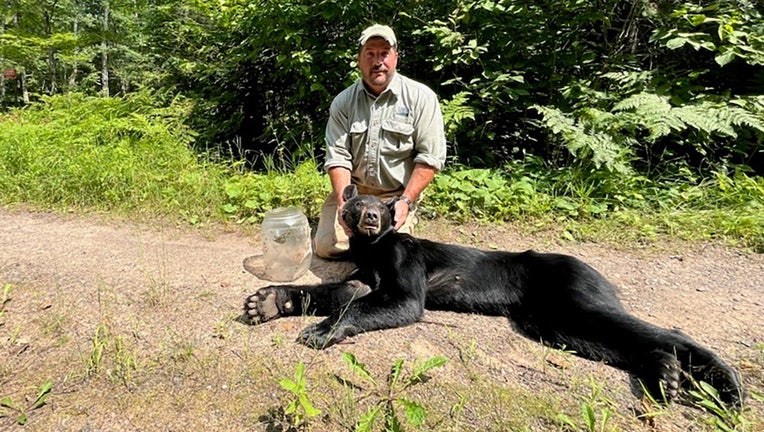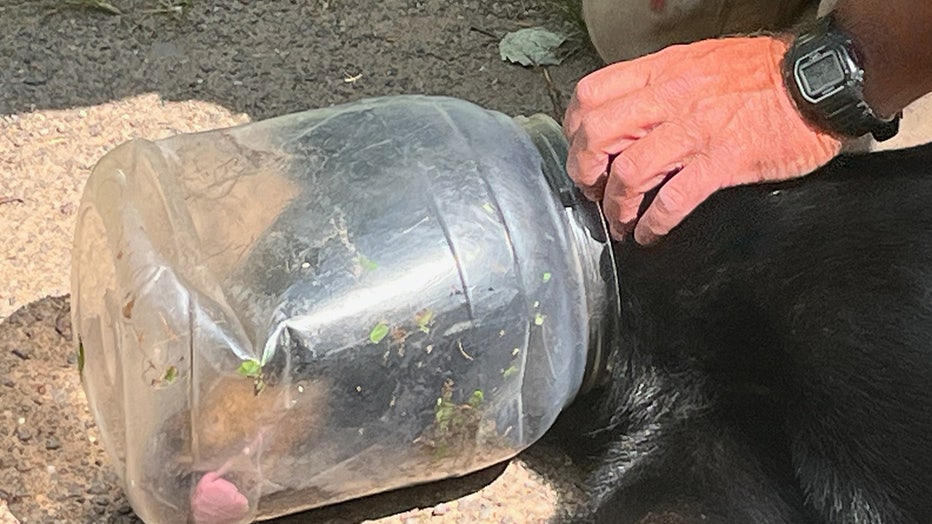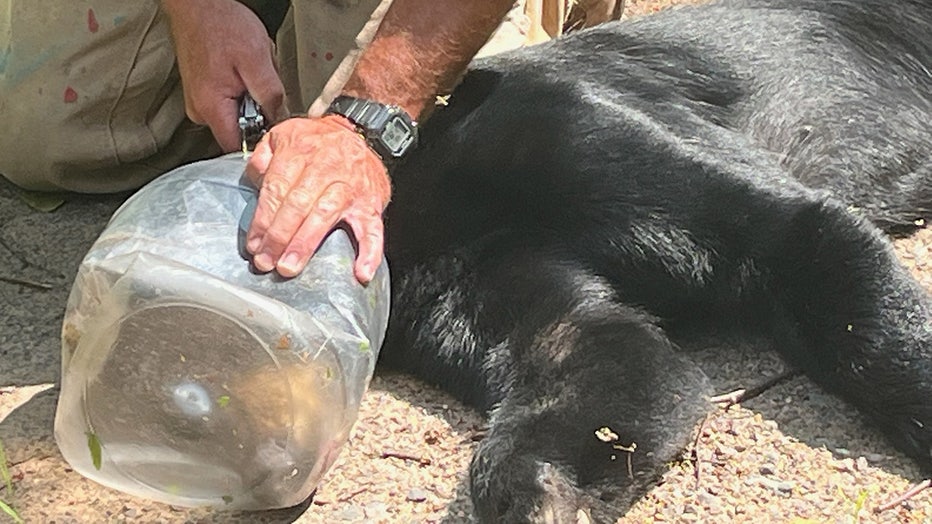 article
article
A bear with a jar stuck on its head in northern Wisconsin was successfully freed this weekend. / Photo Credit: USDA APHIS Wildlife Services
CABLE, Wis. – A bear that had its head stuck in a jar for several days was successfully freed by U.S. Department of Agriculture (USDA) Wildlife Services staff near Cable, Wisconsin.
The Wisconsin Department of Natural Resources (DNR) partners with USDA Wildlife Services to respond to a variety of wildlife-related agricultural and residential damage or nuisance situations, including situations like this.
Search and sedation effort
Timeline:
The DNR and USDA Wildlife Services first learned of a bear with a plastic jar stuck on its head in north central Sawyer County on Saturday, July 26.
SIGN UP TODAY: Get daily headlines, breaking news emails from FOX6 News
Since the bear was first seen, the bear moved nearly 50 miles and was reported multiple times across northern Sawyer County and southern Bayfield County and Douglas County.
Staff from USDA Wildlife Services set several live traps for the bear based on sightings, but that was unsuccessful due to the distance the bear was traveling each day.
After more than a week of monitoring and trapping efforts, several public reports of the bear over the weekend of Aug. 2-3 indicated it was likely returning to the area where it was first seen.
On Sunday, Aug. 3, a trained wildlife professional responded to a report of the bear at a private residence and was able to safely dart the bear with a sedative.
Once the bear was sedated, staff were able to cut off the jug and check the bear for injuries.

Removing the jar from the bear

Removing the jar from the bear
FREE DOWNLOAD: Get breaking news alerts in the FOX LOCAL Mobile app for iOS or Android
Bear tagging
What’s next:
No lacerations or additional injuries were noted, and the approximately 70-pound, 2-year-old sow (female bear) was relocated to a safe, wooded area with ample food and water to allow the bear to recover.
The bear received two plastic ear tags for identification, consistent with federal law regarding the administration of immobilization drugs in free-ranging wildlife.
The bear was alert when released and quickly began feeding on a patch of berries nearby.
According to the DNR, natural food is abundant in northern Wisconsin at this time of year, and the bear’s best chance of survival is in the wild, feeding on naturally occurring food sources.
What they’re saying:
“We do not know how long the jug was on the bear’s head, but it was a little skinny when captured. There were punctures in the jug – likely from the bear’s claws – and a public observation indicated that it was able to drink by dunking its head in water,” said Randy Johnson, DNR large carnivore specialist. “The bear was likely surviving on body fat reserves (which can be significant on bears by midsummer). A bear of that age and sex normally averages between 100-150 pounds this time of year.”
The Source: The Wisconsin Department of Natural Resources (DNR) sent FOX6 a press release.
